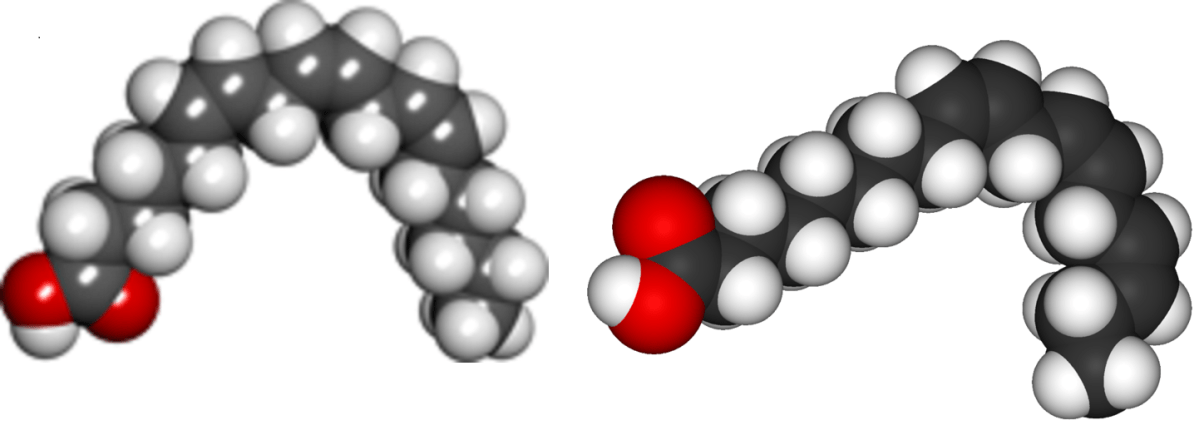
Ive learned a great deal from Dr Mercola over the years.His orientation toward natural approaches to long-term health, using diet and lifestyle in preference to pharmaceuticals, aligns with my own.I agree with most of what he has to say.So, when he launched a campaign vilifying seed oils in the diet, I stood up and paid attention.
Linoleic acid found in vegetables and seed oils may be the biggest contributor to chronic disease in the Western world.[from Dr Mercolas Censored Library]Last spring, he published a review article on health hazards from 6 fatty acids in general and linoleic acid (LA) in particular.He makes a multi-pronged theoretical case linking LA to defective cell membranes, leading to diabetes, cognitive impairment, heart disease, and cancer.
At the end, he tries to tie these concerns to real life results with epidemiological studies.To me, it seems that the theoretical arguments are strong, but epidemiology doesnt seem to support his fears.In particular, most nuts are abundant sources of LA, and yet nut consumption is robustly linked to good health and long life.Chemistry backgroundPetroleum oil consists of chains of carbon atoms surrounded by hydrogen.
These have no biological presence.Saturated fats (biological oils) in biology are similar chains with COOH at one end essentially petroleum-like molecules with vinegar at one end.Unsaturated fats have a double bond between carbons, which is a place where there are missing hydrogens, and an angle or kink in the chain.Petroleum:Saturated fat:Unsaturated fat:Comparison:For omega 3s, the kink is close to the end opposite the vinegar end.
For omega 6s, the kink is closer to the vinegar end.(The pictures are alpha linoleic acid, ALA, an omega 3 (left), and and gamma linoleic acid, GLA, an omega 6 (right).)Petroleum oils are biologically inert because there are no enzymes that can attack the carbon-carbon and carbon-hydrogen bonds.But the vinegar end of a fatty acid is a biochemically active site, and each double bond in the fatty acid is another active site.Food ChemistryAnimal fats tend to be saturated (no double bonds).
They are more viscous.Vegetable oils end to be unsaturated, less viscous, more chemically active.The double bonds make it easier for the body to work with a fat and put it to use.But each double bond is also a place where oxygen can attack the molecule and turn it into a useless and harmful product.
OXLAM means oxidated linoleic acid metabolite, and it is not a single chemical, but a class of chemical byproducts which, Mercola says, can cause disease.Even before it enters the body, unsaturated fats are prone to being oxidized in high-temperature frying.Saturated fats are theoretically better for frying because the double bonds in unsaturated fats are target sites for oxidation.So, for home-fried foods, it is safer to use coconut oil, ghee, butter, or lard.
Restaurant and commercially fried foods are often made with unsaturated seed oils, which are likely to be oxidized by the time we ingest them.The benefits of maintaining the proper omega 3:6 ratio are well-established.Bodily tissues consist primarily of saturated and monounsaturated fats, which are a readily utilized source of nutrients that support the development and maintenance of cells.The primary PUFAs are omega-3 and omega-6 fats, which the body needs in relatively small quantities [ref].It is important to consume sufficient amounts of omega 3 fatty acids to sustain optimal health, with the recommended daily serving being between 500 and 1000 milligrams of omega 3 [ref, ref].
Contrary to previous perceptions, however, consuming larger servings of omega 3 fatty acids does not support an ideal ratio.Instead, excessive quantities of omega 3s may cause additional metabolic damagesimilar to that which occurs due to the conversion of elevated LA levels.[from Mercola & DAdamo]It is well accepted that omega 3 fatty acids have benefits for reducing inflammation.
Mercola claims that animal-derived omega 3s are better in this regard, on the authority of this review.DHA and EPA are long-chain omega 3s, and are converted by our bodies into resolvins that cool inflammation.They come from either fish or ocean algae sources.
ALA is a short-chain omega 3 that comes from walnuts, chia seeds, flax seeds and other vegetarian sources.ALA can be converted to DHA in the body, but slowly and inefficiently.Examine.comagreesOmega 3 fatty acids in flax seed (as well as in Hemp Protein) are found in the form of Alpha-Linolenic Acid (ALA).Not only is ALA not sufficient to supplement on its own[1], but ALA has to be converted by the body into a usable form, and the ratio of conversion from unusable form to usable is rather poor, somewhere in the range of 5-15%[2].
Omega 3 supplements in the form of EPA and DHA are what the body tends to use for many of the benefits associated with fish oil.For vegetarians and vegans, supplementing with DHA from algae can markedly enhance the DHA status (of serum and platelets) and provide for the formation of substantial EPA[3].Supplementation of ALA and/or GLA is not enough[4].TheoryMercola fingers inadvertent oxidation as the process that turns LA into toxic OXLAMs.LA becomes incorporated into cell membranes, where it can remain for years.
The membranes are then more fragile, and oxidation of LA in the membranes makes them porous, not functioning as the cell needs them to function.A particular OXLAM called 4-hydroxynonenal (4-HNE) accumulates, and high levels can trigger programmed cell death in the same way that peroxide is designed to do.Cardiolipin, created from four fatty acids, is essential for the efficient operation of mitochondria.Mitochondria are particularly vulnerable to oxidative damage, and incorporation of LA into cardiolipin is problematic for the mitochondria.
Misformed cardiolipin distorts the convoluted shape of mitochondria, impairing their functionHealth statisticsThe epidemiological evidence for Mercolas worries is weak, and he admits as much.There are conflicting studies, associating LA level positively and negatively with CV risk.Mercola claims the same is true of LA and diabetes, but the beneficial effects are documented by epidemiology, while the paper he cites for detrimental effects is theoretical.
The effect of LA on cancer is mixed, and too small to measure.In this study, higher levels of circulating LA were associated with slightly lower all-cause mortality.In this study, addition of safflower oil to the diet was associated with slightly higher all-cause mortality.Nuts a counter-exampleNuts generally have high fat content, with 80% or more of the total calories coming from fat.Most of that fat is unsaturated (87% in peanuts, 95% in almonds, 80% in cashews), so Dr Mercola recommends limiting nuts to a small part of the diet.
But many epidemiological studies have associated nuts in the diet with modest but significant benefits for CV risk, insulin resistance, and all-cause mortality,.[meta-analysis, review]PlasmalogenThis recent review highlighted the benefits of omega 3s for brain health.The focus is on long-chain omega 3s, derived from either fish or algae.
Plasmalogens are singled out as a promising supplement for preventing and even reversing dementia.Plasmalogens are ether phospholipids constructed by the body out of ingested fatty acids including ALA.Plasmalogens are essential components of cell membranes, especially in the nervous system.
Levels decline after age 40, and declining plasmalogen levels are associated with cognitive decline.Confusingly, the word plasmalogen in the singular is sometimes used to denote a particular short-chain polyunsaturated species, AKA plasmenyl-phosphatidylethanolamine.Dietary supplements of plasmalogen are derived from cow milk or soy, and have been applied successfully in dementia trials.Dietary implicationsThough there are many things that Mercola gets right, he has never understood aging as internally signaled self-destruction, so he is more fearful of accumulated damage than I think is appropriate.Oxidized lipids fits well with his damage model of aging.
I understand the theory, but I think the real-world evidence of epidemiology is more compelling, and epidemiology tells us that nuts and even olive oil are pro-longevity.I agree with Mercola that the story about saturated fats cholesterol cardiovascular risk is discredited.Nevertheless, Im a vegetarian for 50 years now.There is some evidence that vegetarians live longer, but my personal motivation is more empathetic than scientific [newer ref].I continue to eat a lot of nuts in the context of a low-carb vegetarian diet.
I go out of my way to include chia seeds and flax seeds, both for fiber and for 3s.I dont eat fish, so I supplement generously with fish oil and krill oil.Its possible to get 3s from vegetarian ocean sources, but its expensive.
I make salad dressing from olive oil and avocados, and cook with coconut oil.Ive followed this diet for decades and it works for me, but your metabolism is different from mine, and diets are individual by nature.There is no one optimal diet.
Disclaimer: This story is auto-aggregated by a computer program and has not been created or edited by Senior Savings Deals.
Publisher: Josh Mitteldorf ( Read More )
Publisher: Josh Mitteldorf ( Read More )

